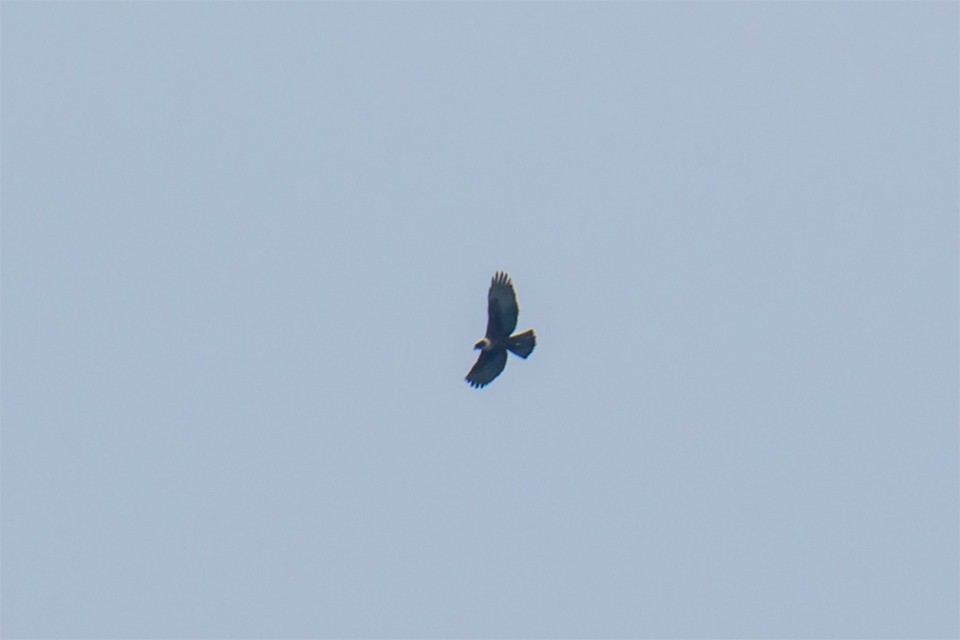Rufous-bellied Eagle
A species of Rufous-bellied Eagle Scientific name : Lophotriorchis kienerii Genus : Rufous-bellied Eagle
Rufous-bellied Eagle, A species of Rufous-bellied Eagle
Botanical name: Lophotriorchis kienerii
Genus: Rufous-bellied Eagle
Content
Description General Info
 Photo By Wich'yanan (Jay) Limparungpatthanakij
Photo By Wich'yanan (Jay) Limparungpatthanakij Description
Adult rufous-bellied eagles are distinctive in their pattern. They have a black hood with a short crest. Chestnut underparts and wing coverts contrast with the white on the throat and breast. The sexes are almost indistinguishable in plumage but females are slightly larger and have more black on the face. They perch in a very upright stance and the wingtip almost reaches the tail. The tarsus is fully feathered. Juveniles have very white underparts with dark markings on the sides of the body, head mask and edge of underwing coverts. They can appear similar to a booted eagle (Aquila pennata). In flight, the underwing lining is dark and the greater coverts are black. The flight feathers are thinly barred with a black edge. The tail is dark and barred. 
Size
60 cm
Nest Placement
Tree
Feeding Habits
Rufous-bellied Eagle predominantly preys on birds and mammals, including sizable avian species and squirrels. This raptor executes breathtaking aerial stoops to catch prey on the ground or atop trees, and also employs still-hunting from perches.
Habitat
The rufous-bellied Eagle thrives in dense foliage environments such as evergreen and moist deciduous forests. These birds are frequently associated with regions where primary forest canopies provide ample coverage, although they have also adapted to secondary forests and plantation areas. Their adaptability allows them to inhabit a varied landscape across the broader geographic expanse of tropical Asia.
Dite type
Carnivorous
General Info
Feeding Habits
Bird food type
Behavior
Rufous-bellied eagles are usually seen in flight, soaring high over the forest canopy. They dive to capture prey that can include birds and mammals in the air, canopy, or forest floor. Birds the size of the Sri Lanka wood pigeon, Kalij pheasant and junglefowl have been recorded as prey. The breeding season of the eagles is in winter with the young fledging in spring when the prey species are also breeding. The display flight involves stooping and wing-quivering. Their calls include a series of high pitched fwick, fwick... notes followed by a thin sweek!. They nest on a large, often bare tree, building a large platform of dry sticks and branches that they break off. The nest is lined with green leaves and a single egg is laid. Both parents take turns in incubation, feeding and nest defence. 
Distribution Area
The rufous-bellied eagle is found in southern and south-eastern Asia and its range also extends to Sulawesi. This species is associated mainly with hill forests. In India, they are commoner in the Western Ghats than along the Himalayas where they occur from Nepal to Assam. They also occur in parts of the Eastern Ghats. 

 Photo By Wich'yanan (Jay) Limparungpatthanakij
Photo By Wich'yanan (Jay) Limparungpatthanakij